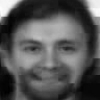Free Online Productivity Tools
i2Speak
i2Symbol
i2OCR
iTex2Img
iWeb2Print
iWeb2Shot
i2Type
iPdf2Split
iPdf2Merge
i2Bopomofo
i2Arabic
i2Style
i2Image
i2PDF
iLatex2Rtf
Sci2ools
ICIP
2002
IEEE
2002
IEEE
Optimal face reconstruction using training
In previous work [2] we considered the problem of image interpolation from an adaptive optimal recovery point of view. We showed how a training set S determines a quadratic signal class and how to use this signal class to perform image interpolation. In [2] the training set S was taken from the low resolution version of the image we were interpolating. In this paper we continue our discussion of the method presented in [2] by looking more closely at the training set S. In particular, we will show how a training set of high resolution images can give very good interpolation results through the use of the method [2].
| Added | 24 Oct 2009 |
| Updated | 27 Oct 2009 |
| Type | Conference |
| Year | 2002 |
| Where | ICIP |
| Authors | D. Darian Muresan, Thomas W. Parks |
Comments (0)

